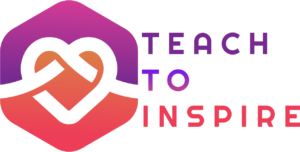
Creating a professional development plan is an essential aspect of growing your career, but it can be daunting. After all, how do you determine what skills you need to develop and where to start? In this article, we’ll take you through the seven steps you need to create a successful professional development plan.
Step 1: Conduct a Training Needs Analysis
Before you begin creating a professional development plan, you need to determine the gaps in your knowledge and skill set. A training needs analysis (TNA) is an effective tool that helps identify training and development needs and potential issues. This process involves working through three levels of analysis – individual analysis, company analysis, and operational tasks analysis – to identify any potential or upcoming skills gaps.
Step 2: Identify Skill Development Focus Areas and Goals
Once you’ve conducted a TNA, you can identify the skill development focus areas and goals. A skills hierarchy can help differentiate between assumed, foundational skills and transferable human-centered skills. Prioritize human-centered skills and competencies that are resistant to change, such as analysis, critical thinking, and problem-solving.
Step 3: Identify Learning Solutions and Technology
After identifying your skills gaps, it’s time to identify learning solutions and technology to support your professional development plan. Consider a learning pathway that acknowledges your interests, skills, and learning styles. You can use existing training resources or create new instructional materials to create a custom course that includes video, animation, and interactive content.
Step 4: Establish a Timeline
Establish a timeline for your professional development plan. Set specific, measurable, achievable, relevant, and time-bound (SMART) goals to keep yourself accountable. Breaking down your goals into smaller milestones can make them more manageable and achievable.
Step 5: Seek Out Mentors
Seek out mentors who can guide and support you in achieving your professional development plan. They can provide valuable feedback, advice, and support that can help you navigate your career growth.
Step 6: Implement Your Plan
Implement your plan by taking courses, attending seminars or webinars, reading books, and participating in workshops. Be open to feedback and continuously look for opportunities to learn.
Step 7: Evaluate Your Plan
Evaluate your plan regularly to determine what is working and what needs improvement. This process will allow you to adjust your plan accordingly and ensure that you are meeting your professional development goals.
Takeaway
Creating a professional development plan is an investment in yourself and your career. It requires dedication, focus, and a willingness to explore new horizons. By following the seven steps outlined above, you can create a roadmap that is tailored to your unique strengths and goals. By identifying your skill gaps and crafting a plan to address them, you can take your career to new heights and achieve your professional aspirations.
But the benefits of professional development go beyond career advancement. By continuously learning and expanding your knowledge, you can stay ahead of industry trends and remain competitive in an ever-evolving job market. This not only enhances your value to your employer but also enriches your personal life.
Remember, learning is a lifelong process, and it’s never too late to start investing in yourself. Whether you’re just starting out in your career or have been in the workforce for years, there is always room for growth and improvement. So, don’t be afraid to step outside of your comfort zone, take on new challenges, and embrace every opportunity to learn and develop.
In summary, creating a professional development plan is a critical step towards achieving success in your career. By taking the time to identify your strengths and areas for improvement, setting specific goals, and devising an actionable plan, you can build the skills and knowledge necessary to take your career to new heights. So, start today, and don’t forget to celebrate your progress along the way!

